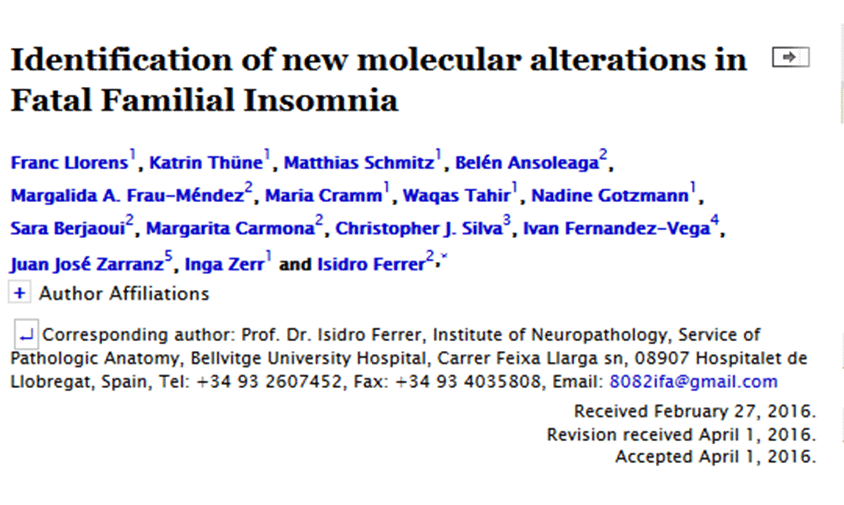“Does the MUNIX Method Reflect Clinical Dysfunction in Amyotrophic Lateral Sclerosis: A Practical Experience” has been published in Medicine. This research was supported in part by JPND through the OnWebDUALS project, selected in the 2013 preventive strategies call, and the SOPHIA project, selected in the 2011 biomarkers call.
Tag Archives: Brain
Depression symptoms that steadily increase in older adults are more strongly linked to dementia than any other types of depression, and may indicate the early stages of the disease, according to the first ever long-term study to examine the link between dementia and the course of depression, published in The Lancet Psychiatry journal.
Symptoms of depression are common in people with dementia, but previous studies have often looked at single episodes of depression, failing to take into account how depression develops over time. The course of depression varies greatly between individuals — some might experience depressive symptoms only transiently, followed by full remission, others might have remitting and relapsing depression, and some might be chronically depressed. Different courses of depression may reflect different underlying causes, and might be linked to different risks of dementia.
The study included 3325 adults aged 55 and over, who all had symptoms of depression but no symptoms of dementia at the start of the study. The data was gathered from the Rotterdam Study, a population-based cohort study of various diseases in the Netherlands which allowed the authors to track depressive symptoms over 11 years and the risk of dementia for a subsequent 10 years.
Using the Center for Epidemiology Depression Scale (CES-D) and the Hospital Anxiety and Depression Scale-Depression (HADS-D), the authors identified five different trajectories of depressive symptoms — low depression symptoms (2441 participants); initially high symptoms that decreased (369); low starting scores that increased then remitted (170); initially low symptoms that increased (255); and constantly high symptoms (90).
Of the 3325 participants, 434 developed dementia, including 348 cases of Alzheimer’s disease. Among the group with low symptoms of depression, 10% (226/2174) developed dementia. The researchers used this as the benchmark against which to compare other trajectories of depression — the study did not compare the risk of dementia following depression with the risk of dementia for adults in the general population (without depression).
Only the group whose symptoms of depression increased over time was at an increased risk of dementia- 22% of people (55/255) in this group developed dementia. This risk was particularly pronounced after the first 3 years. Individuals with remitting symptoms of depression were not at an increased risk of dementia compared to individuals with low depressive symptoms. The authors say that this suggests that having severe symptoms of depression at one point in time does not necessarily have any lasting influence on the risk of dementia.
The authors say their findings support the hypothesis that increasing symptoms of depression in older age could potentially represent an early stage of dementia. They also say that the findings support previous suggestions that dementia and some forms of depression may be symptoms of a common cause. They say that at the molecular levels, the biological mechanisms of depression and neurodegenerative diseases overlap considerably including the loss of ability to create new neurons, increased cell death and immune system dysregulation.
Source: Materials provided by The Lancet
Paper: “10-year trajectories of depressive symptoms and risk of dementia: a population-based study”
“Cerebrospinal fluid soluble TREM2 in aging and Alzheimer’s disease” has been published in Alzheimer’s Research & Therapy. This research was supported in part by JPND through the APGeM project, selected in the 2012 risk factors call.
A paper titled “Loss of VPS13C Function in Autosomal-Recessive Parkinsonism Causes Mitochondrial Dysfunction and Increases PINK1/Parkin-Dependent Mitophagy” has been published in The American Journal of Human Genetics. This research was supported in part by JPND through the COURAGE-PD project, selected in the 2012 risk factors call.
A paper titled “Soluble amyloid induces hypersynchrony of BOLD resting-state networks in transgenic mice and provides an early therapeutic window before amyloid plaque deposition” has been published in Alzheimer’s & Dementia. This research was supported by JPND through the CrossSeeds project, which was selected in the 2013 cross-disease analysis call.
A paper titled “Awaji Criteria Improves the Diagnostic Sensitivity in Amyotrophic Lateral Sclerosis: a Systematic Review Using Individual Patient Data” has been published in Clinical Neurophysiology. This research was supported by JPND through the STRENGTH project, which was selected in the 2012 risk factors call.
A paper titled “Case report of concurrent Fabry disease and amyotrophic lateral sclerosis supports a common pathway of pathogenesis” has been published in Amyotrophic Lateral Sclerosis and Frontotemporal Degeneration. This research was supported by JPND through the SOPHIA, STRENGTH and ALS-CarE projects.
A paper titled “The selective anatomical vulnerability of ALS: ‘disease-defining’ and ‘disease-defying’ brain regions” has been published in Amyotrophic Lateral Sclerosis and Frontotemporal Degeneration. The research group of Orla Hardiman received support from JPND through the SOPHIA project, which was selected for support in the 2011 biomarkers call.
A new paper titled “Identification of new molecular alterations in Fatal Familial Insomnia” has been published in Human Molecular Genetics. It was in part funded by JPND through the DEMTEST project, which was selected for support in the 2011 biomarkers call.
A new paper titled “Structural and functional properties of prefibrillar α-synuclein oligomers” has been published in Scientific Reports. It was partly funded by JPND through the NeuTARGETs project, which was selected for support in the 2013 call for research projects for cross-disease analysis of pathways related to neurodegenerative diseases.
